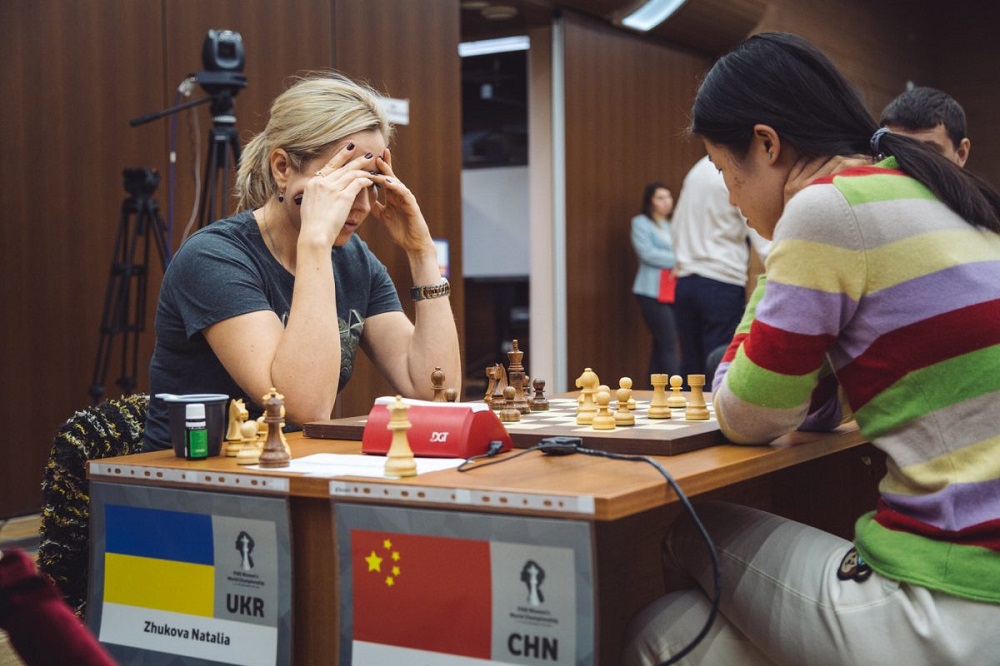


Chess News


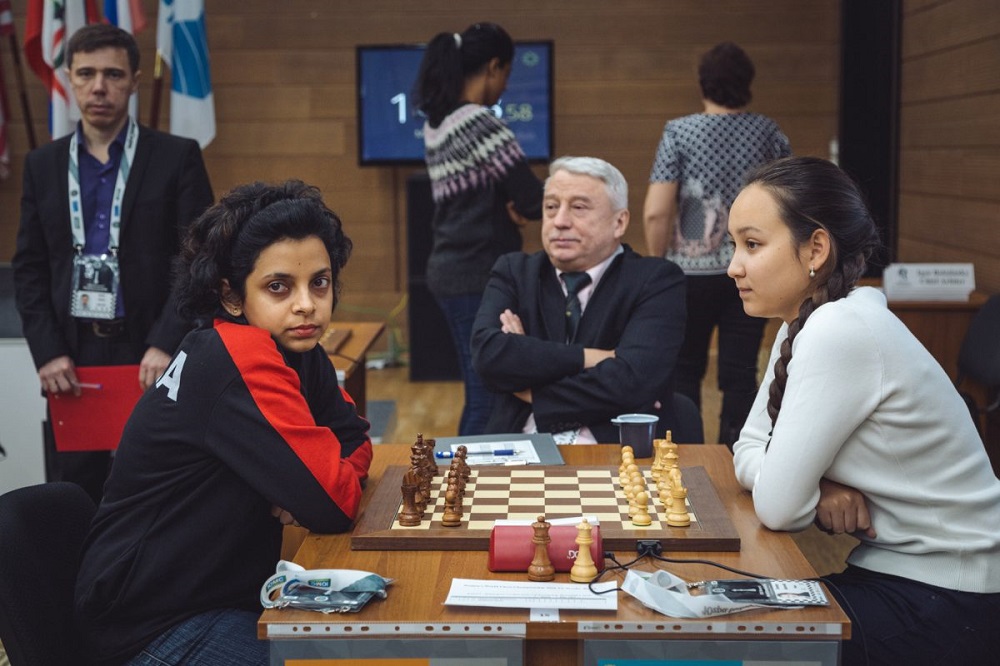
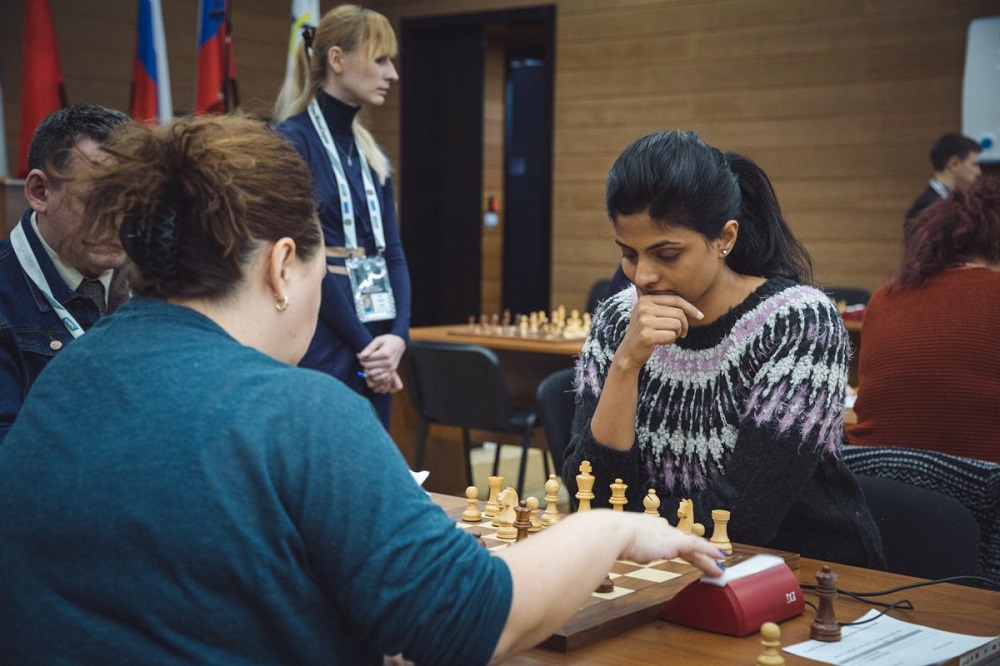
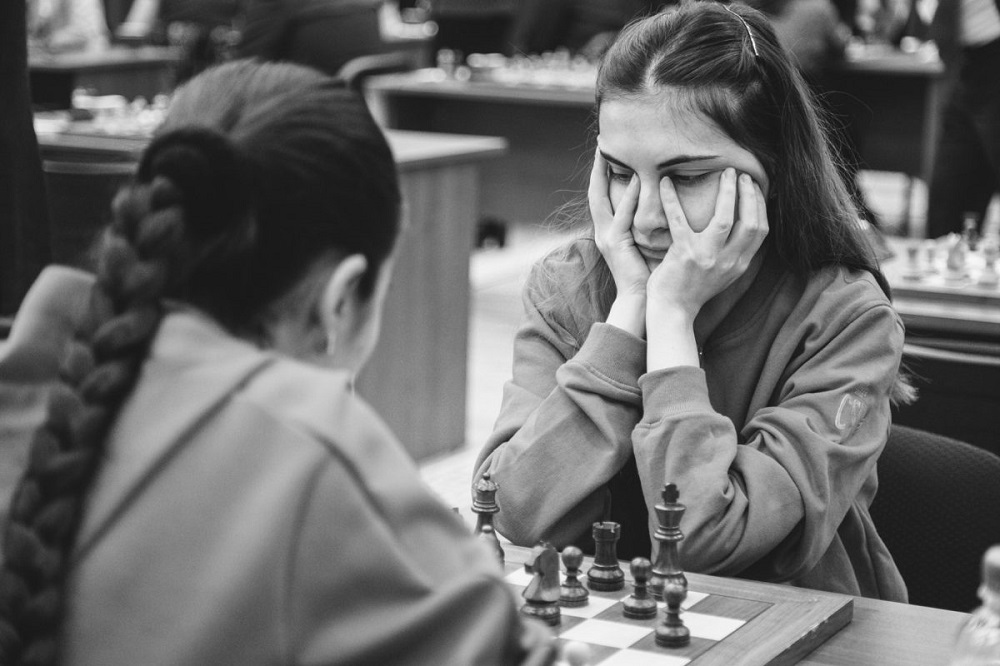
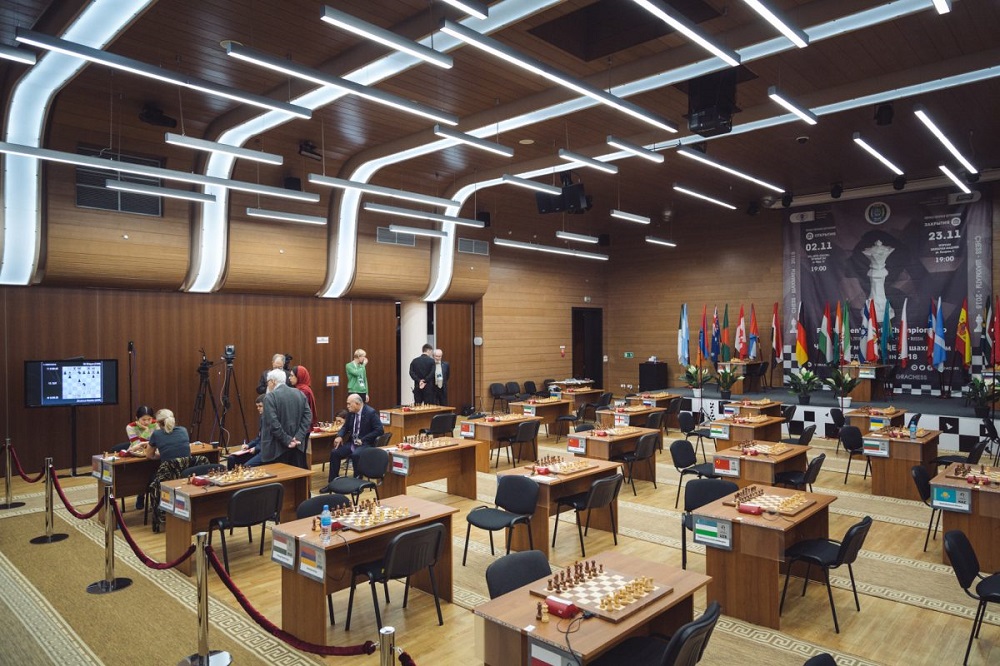

Winning the first game turned out to be crucial in this year's knockout tournament in Khanty-Mansiysk. The big exception of the rule was the match Ni Zhiqun vs Zhukova, but even in the classical portion of the matches no player managed to win on demand to tie the score — clear favourites Elisabeth Paehtz and Olga Girya were eliminated by Mobina Alinasab and Zhai Mo after losing the inaugural game. The same happened in the play-offs, where every single player that won the first rapid game ended up getting overall victory.
The first sensation of the day was seen in the match between Guliskhan Nakhbayeva and Alisa Galliamova. The Kazakhstani had taken advantage of starting with the white pieces and was completely winning by move 34. At that point, she tried to close-off the game with a spectacular queen sacrifice:
White played 35.Qxg6? and the evaluation turned upside down in favour of Galliamova. Nakhbayeva evidently missed that her opponent's queen was in the same diagonal, as 35...fxg6 would have led to an outstanding tactical achievement by White. After 35...Qxg6, however, the Russian needed only four more moves to take the full point. In the return match, Galliamova had White and achieved a big advantage, but instead of finishing her opponent off she exchanged pieces when she had the chance and signed a 123-move draw to get to the second round.
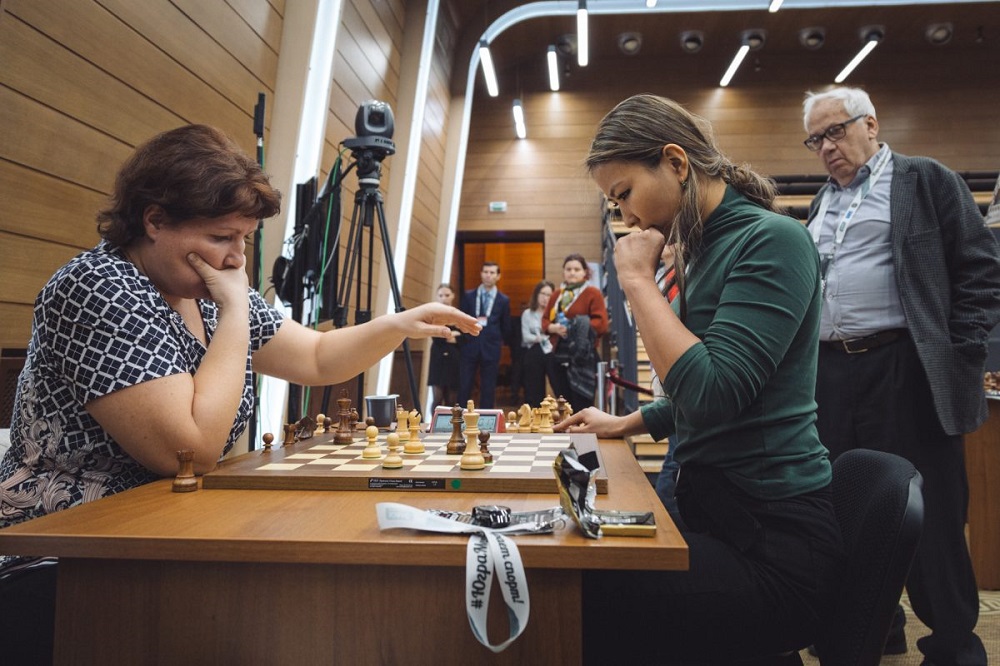
Nakhbayeva could not handle the pressure and fell against Galliamova | Photo: Official site
Another Russian player went through after winning her first game and drawing the next in the play-offs — Anastasia Bodnaruk took down current Spanish champion Sabrina Vega. Sabrina tried to mount an attack against Black's slightly loose king, but ended up regretting her decision:
White has her rooks on the g and h-files, with the knight and bishop pointing in the direction of the black king. However, 41...h4 is more than enough to keep the white pieces at bay. The game continued 42.exf5 Nxf5 43.Ne4 d5 44.Rd1 dxe4 45.Rxd8:
Bodnaruk's passed pawns on the kingside would end up deciding the game in her favour. The Russian also had an advantage in the second game, but Vega found a perpetual check to avoid a play-off whitewash.
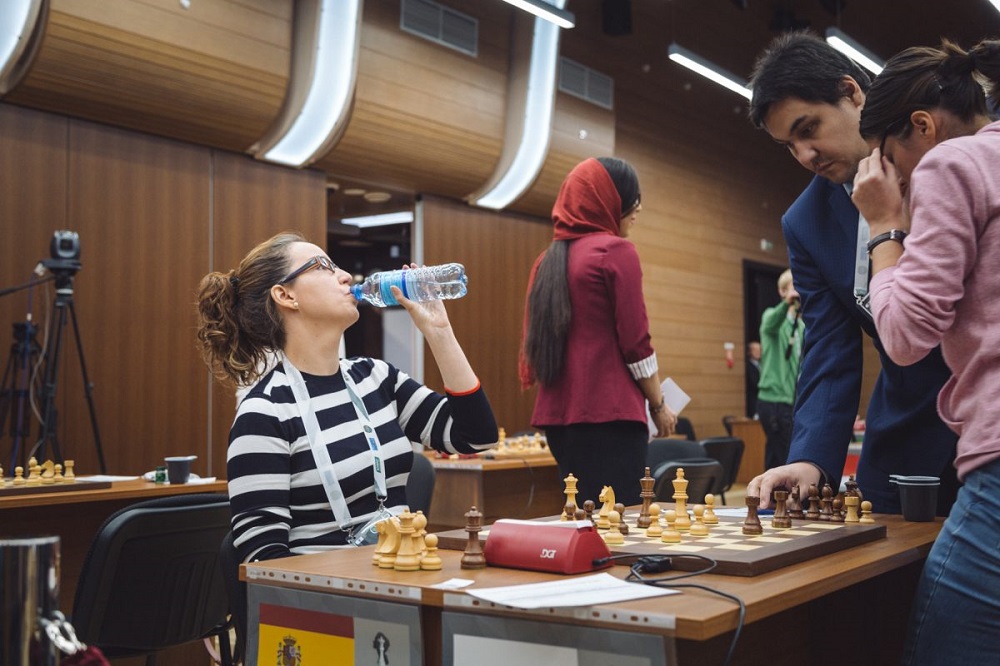
The match is over | Photo: Official site
In the meantime, seven-time U.S. Women's Champion Irina Krush did get a 2:0 against Inna Gaponenko. Things could have gone a whole different way had the Ukrainian found the correct continuation in their first encounter:
Krush has white and her pieces look more active (especially the queen pinning the rook on f7), but actually the white king is the one that is more vulnerable. Gaponenko needed to make use of this fact and play 44...Qg5+ here — after 45.Kh1 Ng7, White's queen would have to go back to h3 and the initiative would change hands. However, the Ukrainian chose 44...Ncd6 and a series of exchanges left Krush a pawn up.
Black went for the d-pawn with 48...Rf5 and Krush did not bother defending it, as it was her passed a-pawn the one that would decide the game. In the return match, Irina showed her class and turned her opponent's desperate attempts to complicate matters into a second win and got her ticket to the next round.
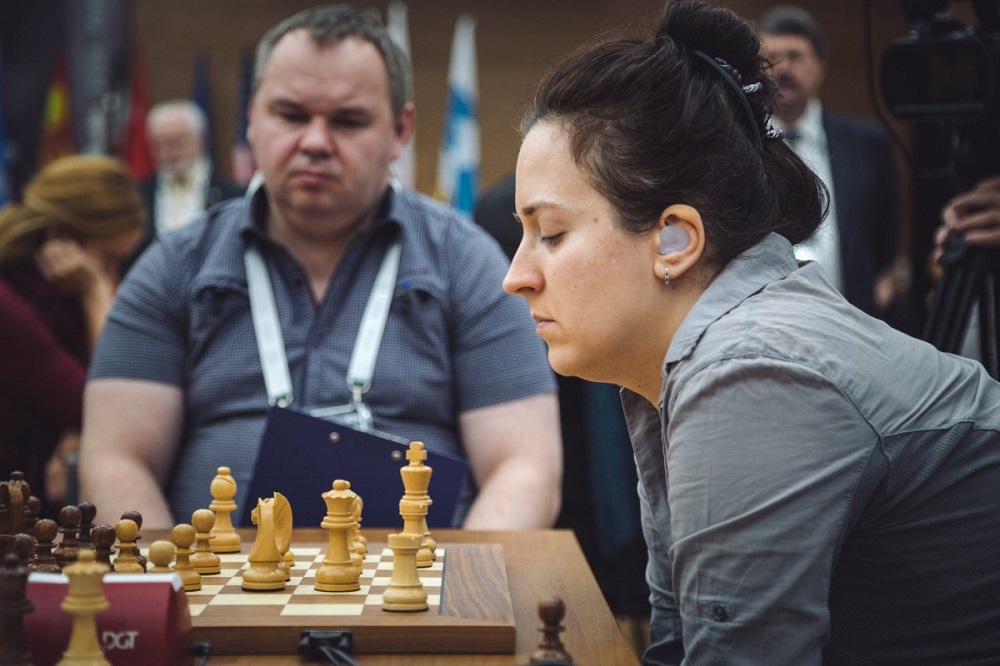
Seven-time Women's U.S. Champion Irina Krush | Photo: Official site
The stellar match of the first round, in terms of excitement at least, was Ni Shiqun vs Natalia Zhukova. As mentioned above, it was the only encounter where a player recovered from a loss in the classical portion — the Chinese managed to do so with Black. Then, on Monday, it was the only match to go past the first 25+10 rapid games. In the first 10+10 encounter, Ni Shiqun had the "advantage" of playing with the black pieces (both classical games finished with wins for Black):
This game was a case of Black allowing White to gain a spatial advantage only to have easier targets to attack. All throughout, Zhukova had the initiative, but she could not make much of it, as Black kept all the threats under control. In the position above, it was Ni Shiqun who started mobilising her kingside majority — 46...h5 has the clear intention of creating a passed pawn on that side of the board. Ten moves later, it was clear who had used her trumps more effectively:
White soon had to give up her bishop to stop the f-pawn and the game finished in favour of the Chinese after 65 moves. A short 34-mover followed, where Zhukova offered a draw from an inferior position.
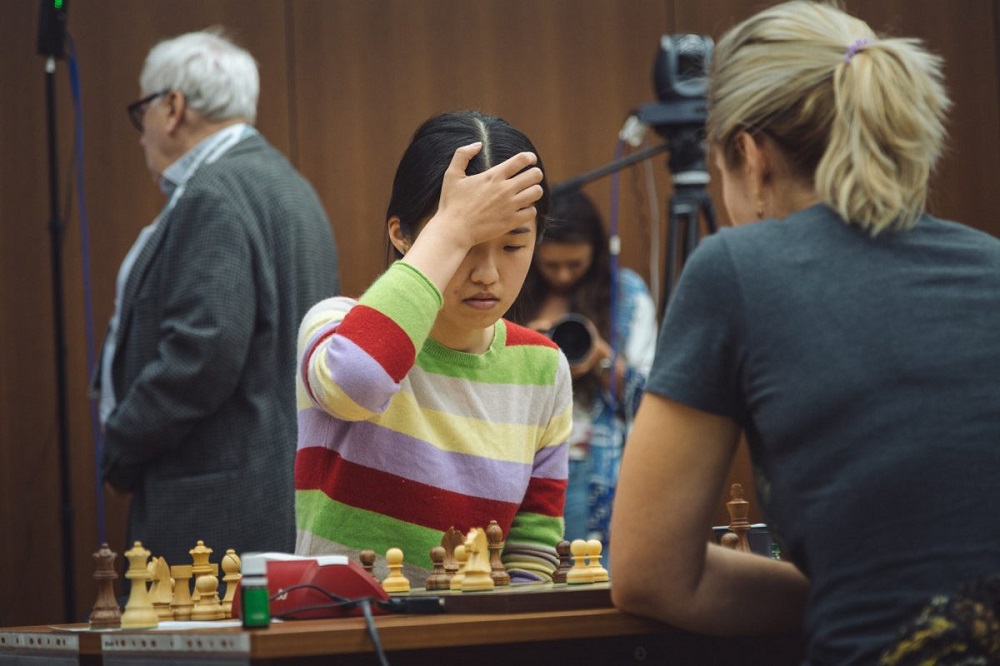
Ni Shiqun in the middle of the struggle | Photo: Official site
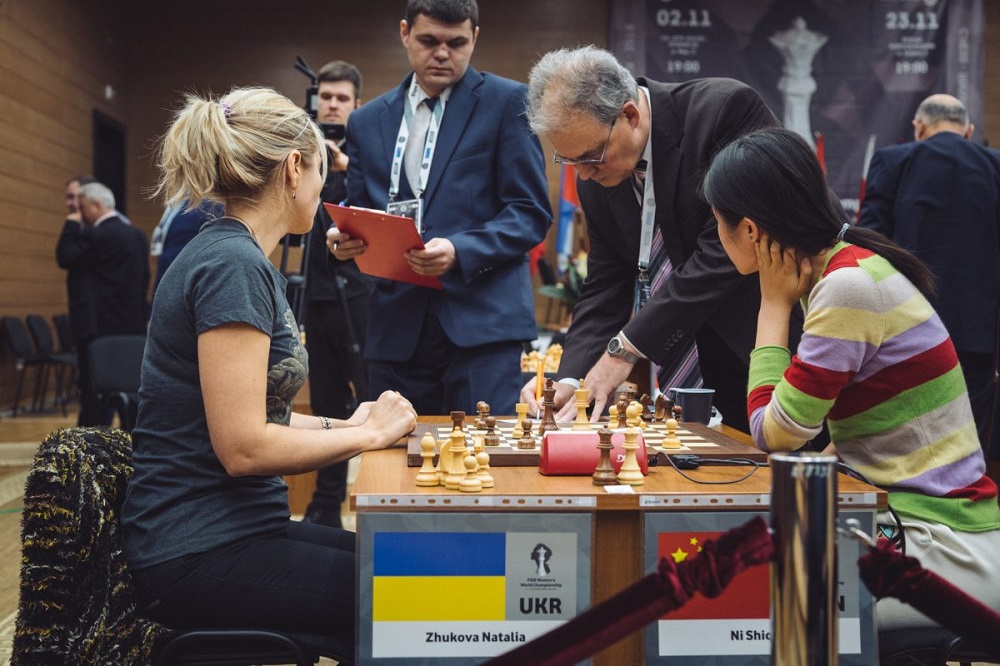
The scoresheets are signed and the Chinese goes through | Photo: Official site
Also through in the play-off stage: Antoaneta Stefanova, Dinara Saduakassova, Harika Dronavalli, Zhansaya Abdumalik, Ekaterina Atalik, Hoang Than Trang and Lei Tingjie.
| Hardegen Kathryn | (AUS) | 0-2 | Ju Wenjun | (CHN) |
| Koneru Humpy | (IND) | 2-0 | Toubal Hayat | (ALG) |
| February Jesse Nikki | (RSA) | 0-2 | Lagno Kateryna | (RUS) |
| Muzychuk Anna | (UKR) | 2-0 | Hamid Rani | (BAN) |
| Vazquez Maccarini, Danitza | (PUR) | 0-2 | Kosteniuk Alexandra | (RUS) |
| Goryachkina Aleksandra | (RUS) | 1½-½ | Ouellet, Maili-Jade | (CAN) |
| Wafa Shahenda | (EGY) | 0-2 | Muzychuk Mariya | (UKR) |
| Tan Zhongyi | (CHN) | 1½-½ | Sun Fanghui | (CHN) |
| Aliaga Fernandez, Ingrid Y | (PER) | ½-1½ | Gunina Valentina | (RUS) |
| Paehtz Elisabeth | (GER) | ½-1½ | Alinasab Mobina | (IRI) |
| Miranda Llanes, Yerisbel | (CUB) | 0-2 | Dzagnidze Nana | (GEO) |
| Harika Dronavalli | (IND) | 2½-1½ | Khukhashvili Sopiko | (GEO) |
| Foisor Sabina-Francesca | (USA) | 1-3 | Stefanova Antoaneta | (BUL) |
| Pogonina Natalija | (RUS) | 1½-½ | Kulkarni Bhakti | (IND) |
| Padmini Rout | (IND) | 1½-2½ | Abdumalik Zhansaya | (KAZ) |
| Batsiashvili Nino | (GEO) | 2-0 | Arakhamia-Grant Ketevan | (SCO) |
| Zhai Mo | (CHN) | 2-0 | Girya Olga | (RUS) |
| Zhao Xue | (CHN) | 2-0 | Lujan, Carolina | (ARG) |
| Zhu Jineer | (CHN) | 2-0 | Javakhishvili Lela | (GEO) |
| Saduakassova Dinara | (KAZ) | 3-1 | Matnadze Ana | (ESP) |
| Vo Thi Kim Phung | (VIE) | ½-1½ | Khotenashvili Bela | (GEO) |
| Lei Tingjie | (CHN) | 3-1 | Gara Anita | (HUN) |
| Shvayger Yuliya | (ISR) | ½-1½ | Socko Monika | (POL) |
| Ushenina Anna | (UKR) | 1½-½ | Mkrtchian Lilit | (ARM) |
| Tokhirjonova Gulrukhbegim | (UZB) | 1½-½ | Kashlinskaya Alina | (RUS) |
| Atalik Ekaterina | (TUR) | 3-1 | Cori T., Deysi | (PER) |
| Nakhbayeva Guliskhan | (KAZ) | 1½-2½ | Galliamova Alisa | (RUS) |
| Ni Shiqun | (CHN) | 3½-2½ | Zhukova Natalia | (UKR) |
| Vega Gutierrez Sabrina | (ESP) | 1½-2½ | Bodnaruk Anastasia | (RUS) |
| Hoang Thanh Trang | (HUN) | 2½-1½ | Danielian Elina | (ARM) |
| Nechaeva (Guseva) Marina | (RUS) | ½-1½ | Zawadzka Jolanta | (POL) |
| Krush Irina | (USA) | 3-1 | Gaponenko Inna | (UKR) |